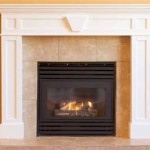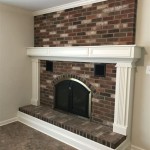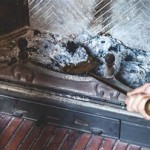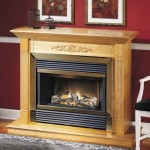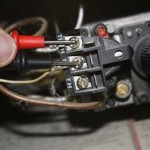Outdoor Fireplace Tree Clearance: Preventing Hazards and Ensuring Safety
Outdoor fireplaces offer a focal point for entertainment and relaxation, extending living spaces into the backyard. However, the proximity of trees to these structures poses a significant fire risk. Maintaining adequate tree clearance around an outdoor fireplace is crucial for preventing property damage, protecting surrounding vegetation, and ensuring the safety of individuals using the space. This article will explore the importance of tree clearance, recommended distances, factors influencing clearance needs, and practical steps for achieving and maintaining a safe environment around an outdoor fireplace.
Understanding the Importance of Tree Clearance
The primary reason for maintaining tree clearance around an outdoor fireplace is fire prevention. Embers and sparks can travel significant distances, especially during windy conditions. These airborne fire starters can easily ignite dry leaves, branches, and other flammable materials present in nearby trees and shrubs. A fire originating in the canopy of a tree can quickly spread to other trees, structures, and even neighboring properties, leading to devastating consequences. Beyond the immediate danger of fire, there are other compelling reasons to prioritize tree clearance.
Reduced Smoke Exposure: Adequate clearance promotes better airflow around the fireplace, reducing the amount of smoke that accumulates in the immediate vicinity. Excessive smoke exposure can lead to respiratory irritation and pose health risks, especially for individuals with pre-existing respiratory conditions. Properly distanced trees allow smoke to dissipate more effectively, creating a more comfortable and healthier environment for those enjoying the outdoor fireplace.
Protection of Tree Health: The intense heat radiating from an outdoor fireplace can damage nearby trees, even if they don't directly catch fire. This heat can scorch leaves, dry out branches, and weaken the overall health of the tree. Over time, this damage can make the tree more susceptible to disease and insect infestations, potentially leading to its decline or even death. Maintaining adequate clearance protects the long-term health and vitality of the surrounding trees.
Ensuring Structural Integrity: Overhanging branches can pose a threat to the structural integrity of the fireplace itself. Falling branches, especially during storms or periods of high winds, can damage the chimney, flue, or other components of the fireplace. The weight of accumulated snow or ice on branches can also place undue stress on the structure. By maintaining clearance, the risk of damage from falling branches is significantly reduced.
Recommended Clearance Distances
Determining the appropriate tree clearance distance is essential for mitigating fire risks and ensuring the safety of the surrounding environment. While specific regulations may vary depending on local codes and ordinances, general guidelines provide a starting point for establishing a safe zone around an outdoor fireplace. These recommendations consider various factors, including the type of fireplace, the size and maturity of the surrounding trees, and prevailing wind conditions.
General Guidelines: As a general rule, maintain a minimum of 10 feet of clearance around the top and sides of the fireplace. This means no branches should be within 10 feet of the chimney opening or the sides of the firebox. For larger fireplaces or those with higher chimneys, this distance may need to be increased. It's also advisable to clear any ground vegetation, such as dry grass, leaves, or shrubs, within a 10-foot radius of the fireplace base. This creates a fire-resistant zone that helps prevent ground-level fires from spreading.
Consideration of Tree Size and Type: The size and type of trees near the fireplace significantly influence the required clearance distance. Larger, mature trees with extensive canopies require greater clearance than smaller trees or shrubs. Deciduous trees, which shed their leaves in the fall, may pose a greater fire risk in the autumn and winter months when dry leaves accumulate. Coniferous trees, such as pines and firs, are often highly flammable due to their resinous needles. Extra caution is needed when dealing with these types of trees, and clearance distances may need to be increased accordingly.
Local Regulations and Codes: Always consult local regulations and building codes to determine the specific tree clearance requirements in your area. Many municipalities have ordinances in place that dictate the minimum distance between trees and structures, including outdoor fireplaces. These regulations are designed to protect public safety and prevent wildfires. Failure to comply with local codes can result in fines or other penalties. Contacting the local fire department or building inspection office can provide valuable information about specific requirements and best practices.
Factors Influencing Clearance Needs
Several factors influence the appropriate tree clearance distance around an outdoor fireplace. These factors relate to the fireplace itself, the surrounding environment, and the prevailing weather conditions. Understanding these variables is crucial for making informed decisions about clearance requirements and implementing effective fire prevention measures.
Fireplace Design and Construction: The design and construction of the fireplace itself play a role in determining clearance needs. Fireplaces with enclosed fireboxes and spark arrestors minimize the risk of embers escaping and igniting nearby vegetation. Conversely, open fireplaces without spark arrestors pose a greater fire risk and require increased clearance. The height of the chimney also influences the distance that embers can travel. Taller chimneys generally require greater clearance to ensure that sparks don't land on nearby trees.
Environmental Conditions: Environmental conditions, such as wind speed and direction, humidity levels, and the dryness of vegetation, significantly impact fire risk. Windy conditions can carry embers over greater distances, increasing the likelihood of ignition. Dry vegetation is more easily ignited than moist vegetation. During periods of drought or prolonged dry weather, extra caution is needed, and clearance distances may need to be increased. Monitoring weather forecasts and adjusting fireplace usage accordingly is essential for maintaining a safe environment.
Maintenance and Upkeep: Regular maintenance and upkeep of both the fireplace and the surrounding vegetation are crucial for preventing fires. Remove accumulated ash and debris from the firebox regularly. Inspect the chimney for cracks or damage and repair any issues promptly. Prune trees and shrubs to remove dead or dying branches, which are highly flammable. Rake up dry leaves and other flammable materials from around the fireplace. Consistent maintenance reduces the risk of fire hazards and ensures that the fireplace operates safely.
Prevailing Wind Patterns: Understanding the prevailing wind patterns in the area is crucial for determining the most effective tree clearance strategy. Observe the direction from which the wind typically blows and identify any trees or shrubs that are particularly vulnerable to ember exposure. Focus on clearing vegetation in the path of the prevailing winds to minimize the risk of fire spreading to other areas. Consider installing windbreaks or other barriers to deflect the wind and reduce the distance that embers can travel.
Practical Steps for Achieving and Maintaining Clearance
Achieving and maintaining adequate tree clearance around an outdoor fireplace requires a proactive approach and a commitment to safety. These steps include assessing the existing vegetation, implementing appropriate pruning and removal techniques, and establishing a routine maintenance schedule.
Assessment of Existing Vegetation: Begin by conducting a thorough assessment of the existing vegetation around the fireplace. Identify all trees, shrubs, and other plants that are within the recommended clearance zone. Evaluate the size and health of these plants, and note any potential fire hazards, such as dead branches, dry leaves, or overgrown vegetation. Consider the species of trees and shrubs, and prioritize the removal of highly flammable species. This assessment will provide a clear understanding of the scope of the clearance project.
Pruning and Removal Techniques: Once the assessment is complete, implement appropriate pruning and removal techniques to achieve the desired clearance. Prune branches that are within the clearance zone, using proper pruning methods to avoid damaging the tree. Remove any dead or dying branches, as these are highly flammable. When removing entire trees, ensure that the area is cleared of debris and that the stump is properly ground or removed to prevent regrowth. Consider hiring a professional arborist or tree service for complex pruning or removal tasks.
Establishing a Maintenance Schedule: Maintaining adequate tree clearance is an ongoing process that requires a regular maintenance schedule. Schedule routine inspections of the trees and shrubs around the fireplace to identify any new growth or potential fire hazards. Prune branches as needed to maintain the desired clearance distance. Remove dry leaves, pine needles, and other flammable materials from around the fireplace on a regular basis, especially during the fall and winter months. Consistent maintenance ensures that the fire-resistant zone around the fireplace remains effective.
Use of Fire-Resistant Landscaping: Consider incorporating fire-resistant landscaping around the outdoor fireplace to further reduce the risk of fire. Replace flammable vegetation with fire-resistant plants, such as succulents, ground covers, and drought-tolerant shrubs. Use gravel, mulch, or other non-flammable materials to create a barrier around the fireplace. Install fire-resistant fencing or walls to protect nearby structures. Fire-resistant landscaping provides an additional layer of protection and enhances the overall safety of the outdoor space.

Outdoor Gas Fire Pit Clearances And Other Safety Considerations

Outdoor Fireplace Kits Masonry Stone

Outdoor Gas Fire Pit Clearances And Other Safety Considerations

Majestic Montana 42 Outdoor Wood Fireplace Traditional Brick Colorado Hearth And Home

Outdoor Fireplace Kits Masonry Stone

How To Build An Outdoor Fireplace Step By Guide Buildwithroman

Diy Outdoor Fireplace Kit Fremont Makes Hardscaping And Easy

Outdoor Fireplace Kits Masonry Industries Inc

Outdoor Fireplaces At Com

Diy Outdoor Fireplace Kit Fremont Makes Hardscaping And Easy
Related Posts


